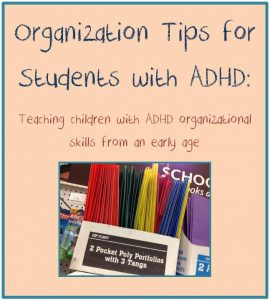
Naturally, kids are playful and energetic. They tend to be curious about things happening around them and go out of their way to explore; thus, at times, they can be inattentive and unfocused on the subject at hand. When these occurrences become too frequent, parents start to ask if there is something wrong with the child or he/she might have attention deficit hyperactivity disorder (ADHD).
ADHD is a genetic and neurological syndrome that affects the regulation of specific brain functions and behaviors. The brain functions changed more on the higher execution skills such as concentration, memory, organization, hyperactive activities and impulsivity, and social skills.
According to statistics, ADHD affects approximately around 11 million people in the United States alone. It occurs in both men and women and usually persists throughout the lifespan.
Since the disorder greatly influenced the brain functions, traditional classroom settings can be complicated for a child with ADHD. Managing a room filled with kids with different personalities and preferences as well as attending to a child with ADHD can be a challenge. However, it is not a hopeless situation. After all, when you concentrate on the facts at hand, all that is expected from a child in school is to behave, sit and listen quietly, being attentive at lectures, follow the lessons and concentrate, are the same things that individuals with ADHD have a difficult time dealing with.
It is important to know that they aren’t deliberately doing these things to negate the authority of the parents or the teachers; it’s just that their brains won’t let them. Students obtain the consequences of their condition through having poor grades, being scolded and reprimanded, getting teased by peers and low self-confidence.

Strategies for Teaching
Teachers play a crucial role in the school experience of a child and cases of ADHD will require the teacher with a great deal of patience, consistency, and creativity to develop strategies that will aid students with ADHD to concentrate and learn their full potentials.
- Placement
- Seating arrangement is vital in gaining the focus and attention of the child.
- Place the student away from windows and doors. It will limit stimulation from outside.
- Put the child right in front of your desk. This way he/she will more likely be focused on the lesson than anything else.
- The recommended seating arrangement is in rows as compared to seated around tables or the students facing one another
- Provide a quiet environment free of distraction during examination and quiet study time.
- 2. Delivery of Information
- It may require repetition and tons of patience on the part of the teacher
- Give brief and straightforward instructions in pace – not in rush moments. Repeat the information as necessary
- Assign the most challenging task/material first thing in class.
- Utilize visual aids such as charts, pictures, and color coding.
- Create summary/outlines
- 3. Assignments/Student Work
- Make learning activities and tests with less number of items. Give them regular short tests.
- Test the student with ADHD in examination method that they excel in for instance orally or multiple choice
- Accept late work and give partial credit for partially done tasks.
